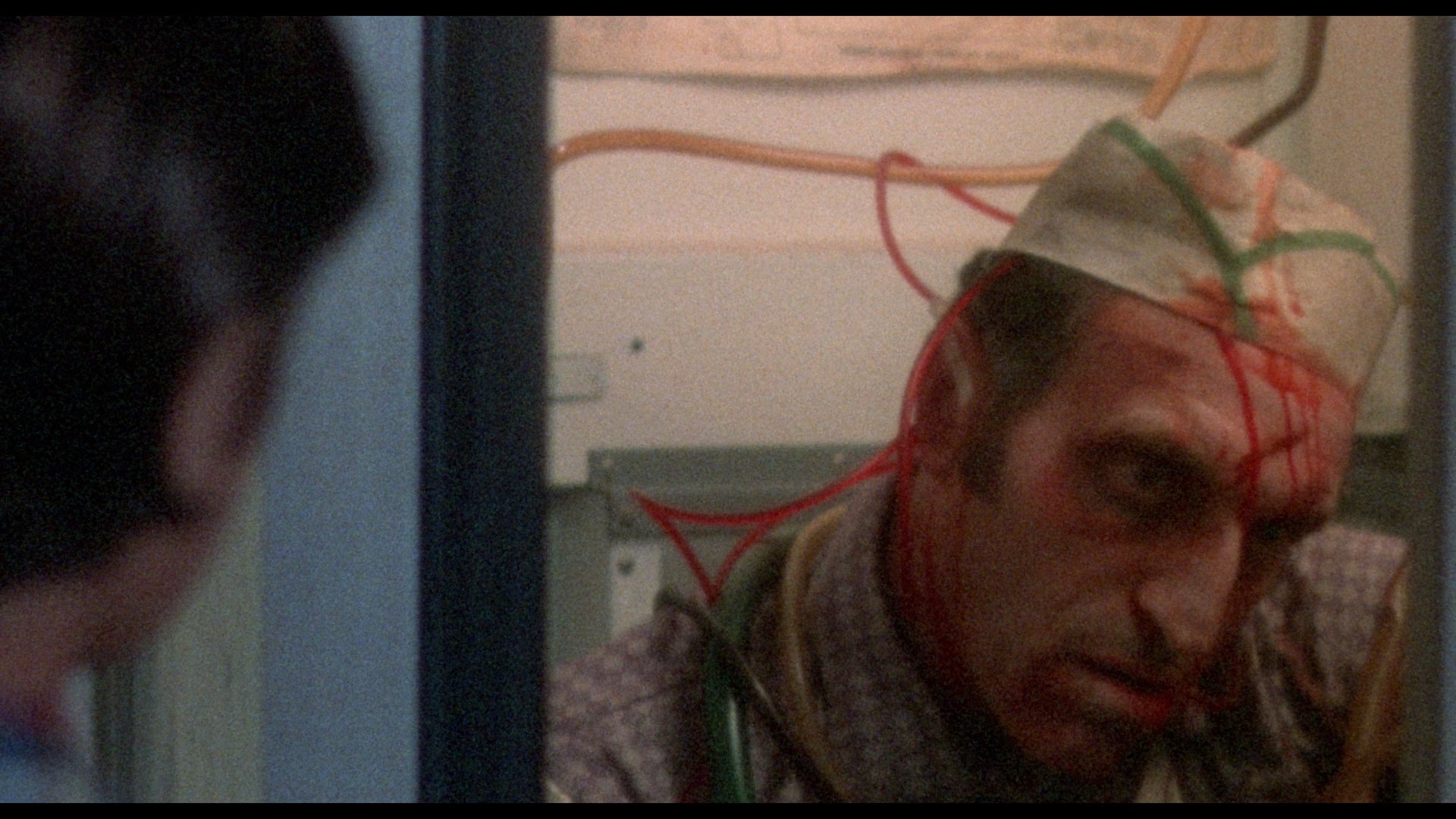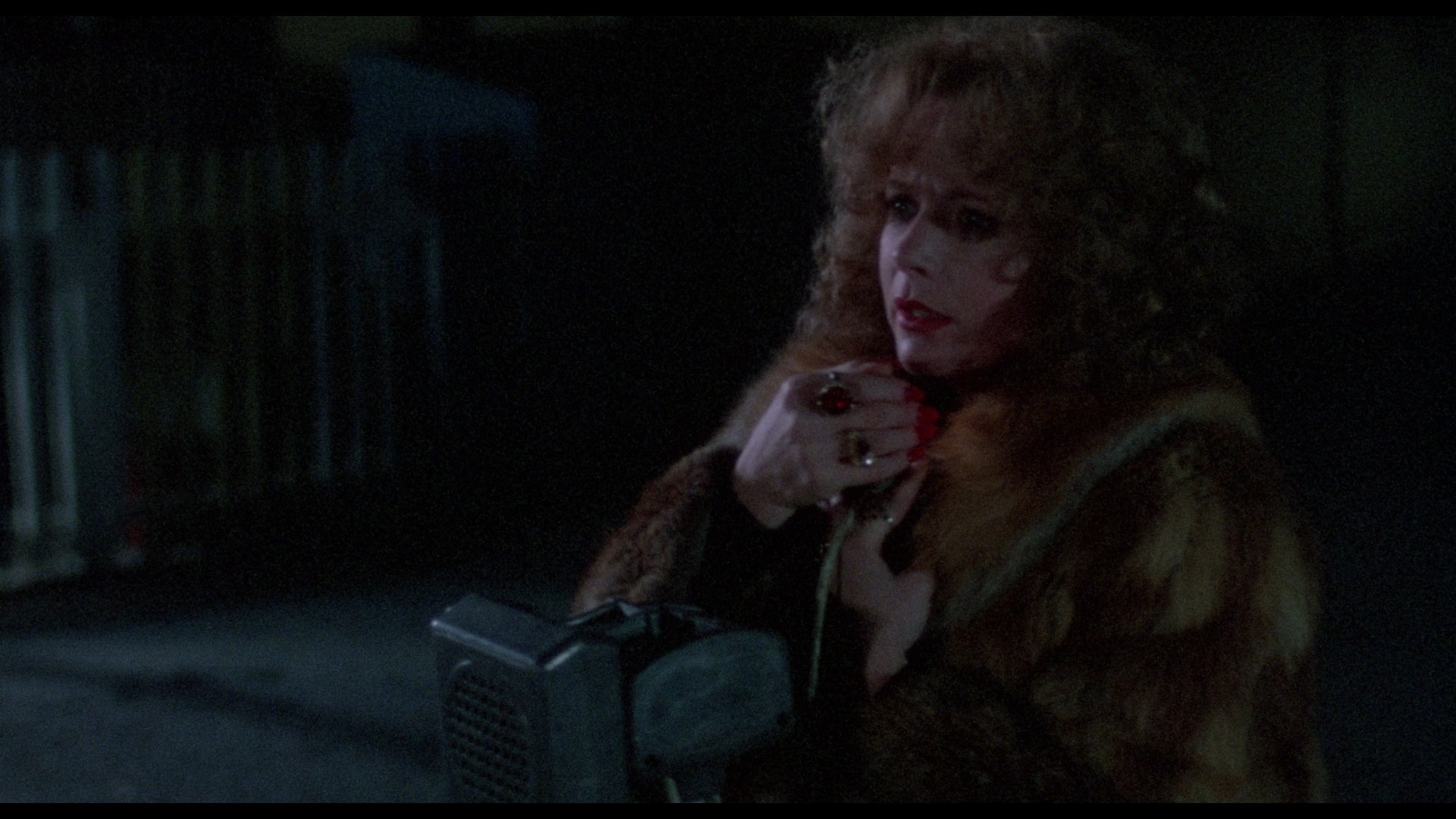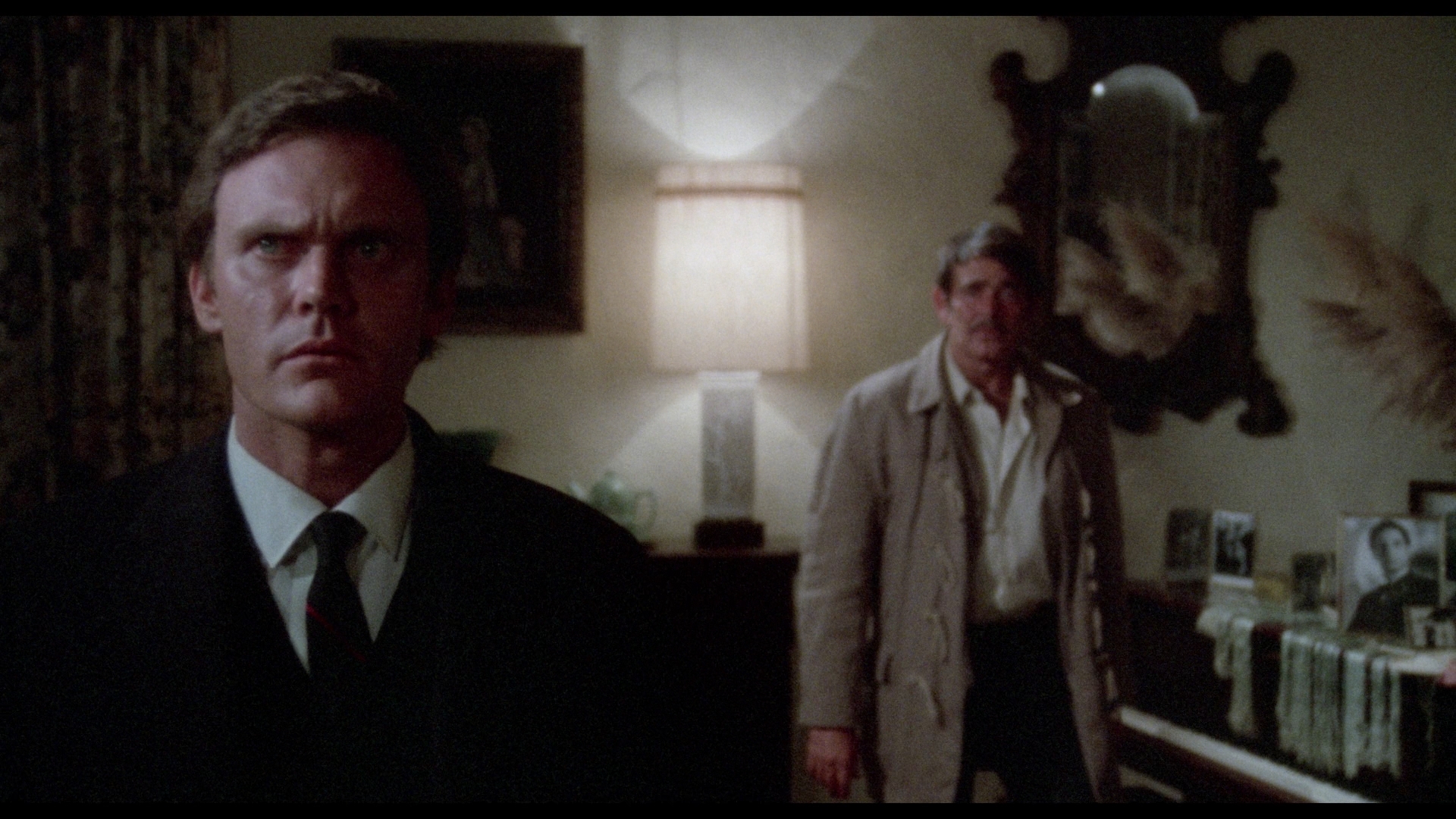

 scholarship exploding during the home video era in the 1980s, a few filmmakers became objects
scholarship exploding during the home video era in the 1980s, a few filmmakers became objects  of far greater study beyond the tattered and somewhat confusing coverage they received from critics in their heyday. One prime example was Curtis Harrington, whose journey from experimental filmmaker to drive-in specialist and Hollywood social fixture was winding down in 1985 with Mata Hari at the same time. Among films like Games, Night Tide, and What's the Matter with Helen? spoken of admiringly in publications like Phil Hardy's The Overlook Film Encyclopedia: Horror and Video Watchdog, there was one film that proved to be especially puzzling: Ruby, a 1977 supernatural shocker that marked Piper Laurie's follow-up to her Oscar-nominated role in 1976's Carrie. Anyone who tried to sit through the VHS versions was left befuddled by the badly paced, murky mess that didn't have any of the highlights earlier reviewers described like a dead body hooked up to a blood-pumping soda machine. In fact, the Dimension Pictures release was a jinxed production with Harrington's intended cut altered by producer Steve Krantz who jettisoned a framing device involving a psychic investigator and replaced the original darkly romantic finale with a very clumsy, confusing shock stinger (with a bad Laurie lookalike) a la Carrie. To make matters worse, the only option on video for decades was a butchered TV edit that ditched almost all of the bloody highlights, padded out instead with over ten minutes of new, endless filler involving side characters like a local cop. Eventually the
of far greater study beyond the tattered and somewhat confusing coverage they received from critics in their heyday. One prime example was Curtis Harrington, whose journey from experimental filmmaker to drive-in specialist and Hollywood social fixture was winding down in 1985 with Mata Hari at the same time. Among films like Games, Night Tide, and What's the Matter with Helen? spoken of admiringly in publications like Phil Hardy's The Overlook Film Encyclopedia: Horror and Video Watchdog, there was one film that proved to be especially puzzling: Ruby, a 1977 supernatural shocker that marked Piper Laurie's follow-up to her Oscar-nominated role in 1976's Carrie. Anyone who tried to sit through the VHS versions was left befuddled by the badly paced, murky mess that didn't have any of the highlights earlier reviewers described like a dead body hooked up to a blood-pumping soda machine. In fact, the Dimension Pictures release was a jinxed production with Harrington's intended cut altered by producer Steve Krantz who jettisoned a framing device involving a psychic investigator and replaced the original darkly romantic finale with a very clumsy, confusing shock stinger (with a bad Laurie lookalike) a la Carrie. To make matters worse, the only option on video for decades was a butchered TV edit that ditched almost all of the bloody highlights, padded out instead with over ten minutes of new, endless filler involving side characters like a local cop. Eventually the  theatrical version (as close to Harrington's
theatrical version (as close to Harrington's  cut as possible given the trimmed footage is lost) did turn up and made it easier to appreciate this eerie intersection of a bygone era and the demands of late '70s horror fans.
cut as possible given the trimmed footage is lost) did turn up and made it easier to appreciate this eerie intersection of a bygone era and the demands of late '70s horror fans. the film mostly pulls off well with
the film mostly pulls off well with  its plaintive music score (including a very Laura-style theme song) adding to the swooning nostalgia at its heart. It's a shame the abrupt ending is all we have now as it does end the film on a clunky note (not unlike what was forced on the original A Nightmare on Elm Street a few years later), but what remains here is truly unique and a fitting swan song to Harrington's big screen horror career. After this he would technically revisit the genre the following year for television with Devil Dog: The Hound of Hell, but that's a whole other story...
its plaintive music score (including a very Laura-style theme song) adding to the swooning nostalgia at its heart. It's a shame the abrupt ending is all we have now as it does end the film on a clunky note (not unlike what was forced on the original A Nightmare on Elm Street a few years later), but what remains here is truly unique and a fitting swan song to Harrington's big screen horror career. After this he would technically revisit the genre the following year for television with Devil Dog: The Hound of Hell, but that's a whole other story... quickly.
quickly. quality bumping up quite visibly including more natural fleshtones, better detail, and far more legibility in the night scenes. The aesthetic here is very filtered and deliberately soft for the majority of the running time, but the UHD (with HDR10-compatible Dolby Vision) in particular looks much better than it ever has before outside of a first-run screening. The DTS-HD MA 2.0 English mono track sounds great given the very straightforward nature of the original mix, and optional English SDH subtitles are included. Both of the prior commentaries are included, but you also get a new one with David Del Valle and David DeCoteau; as anyone who's heard their previous track for Harrington's The Killing Kind can attest, they're a blast talking about the director and that's certainly the case here. Brisk and very entertaining, it's a great snapshot of Harrington, their own memories of and experiences with this film, and plenty of showbiz tangents ranging from the silly to the sad. Among the video extras, all three of the Del Valle interviews are carried over here plus the trailer; you also get a radio spot and the entire TV version in glorious VHS quality so you can remember how bad we used to have it. In the new "Keeping It Natural" (11m36s), Davis looks back at his work with Harrington starting on 1974's Killer Bees for TV (which employed Joel Schumacher early on), his typecasting as a cowboy, and his memories of this film including its box office success, his favorite moments, and the involvement of Krantz. Finally in the new "A Cinematic Summoning" (23m20s), Kim Newman traces Harrington's genre evolution for his early days working with the likes of Kenneth Anger in the underground scene through the development of his camp Hollywood sensibility that manifests throughout much of his work including this oddly effective portrait of doomed love against a moviegoing backdrop.
quality bumping up quite visibly including more natural fleshtones, better detail, and far more legibility in the night scenes. The aesthetic here is very filtered and deliberately soft for the majority of the running time, but the UHD (with HDR10-compatible Dolby Vision) in particular looks much better than it ever has before outside of a first-run screening. The DTS-HD MA 2.0 English mono track sounds great given the very straightforward nature of the original mix, and optional English SDH subtitles are included. Both of the prior commentaries are included, but you also get a new one with David Del Valle and David DeCoteau; as anyone who's heard their previous track for Harrington's The Killing Kind can attest, they're a blast talking about the director and that's certainly the case here. Brisk and very entertaining, it's a great snapshot of Harrington, their own memories of and experiences with this film, and plenty of showbiz tangents ranging from the silly to the sad. Among the video extras, all three of the Del Valle interviews are carried over here plus the trailer; you also get a radio spot and the entire TV version in glorious VHS quality so you can remember how bad we used to have it. In the new "Keeping It Natural" (11m36s), Davis looks back at his work with Harrington starting on 1974's Killer Bees for TV (which employed Joel Schumacher early on), his typecasting as a cowboy, and his memories of this film including its box office success, his favorite moments, and the involvement of Krantz. Finally in the new "A Cinematic Summoning" (23m20s), Kim Newman traces Harrington's genre evolution for his early days working with the likes of Kenneth Anger in the underground scene through the development of his camp Hollywood sensibility that manifests throughout much of his work including this oddly effective portrait of doomed love against a moviegoing backdrop.![]()